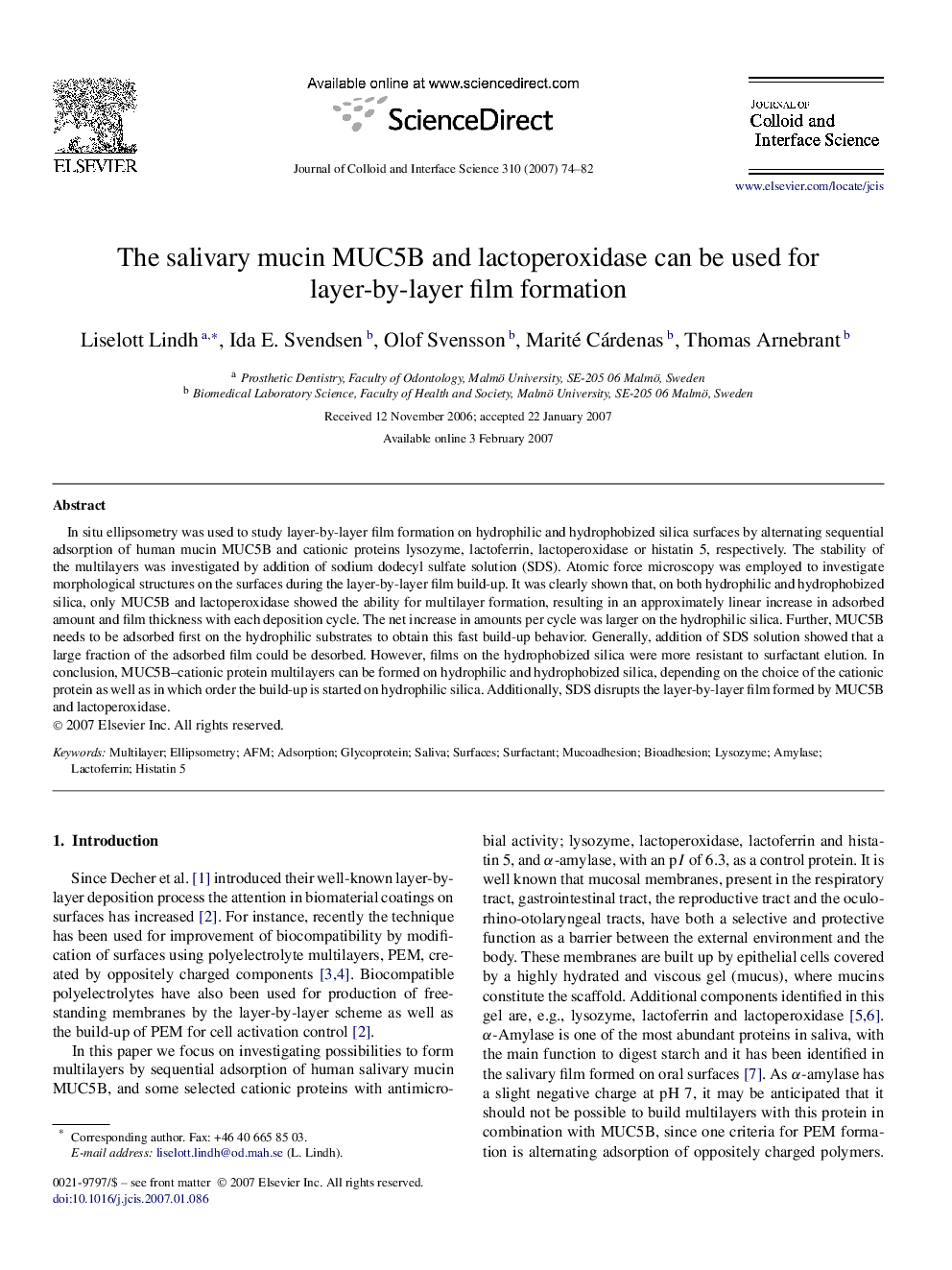| Article ID | Journal | Published Year | Pages | File Type |
|---|---|---|---|---|
| 612313 | Journal of Colloid and Interface Science | 2007 | 9 Pages |
In situ ellipsometry was used to study layer-by-layer film formation on hydrophilic and hydrophobized silica surfaces by alternating sequential adsorption of human mucin MUC5B and cationic proteins lysozyme, lactoferrin, lactoperoxidase or histatin 5, respectively. The stability of the multilayers was investigated by addition of sodium dodecyl sulfate solution (SDS). Atomic force microscopy was employed to investigate morphological structures on the surfaces during the layer-by-layer film build-up. It was clearly shown that, on both hydrophilic and hydrophobized silica, only MUC5B and lactoperoxidase showed the ability for multilayer formation, resulting in an approximately linear increase in adsorbed amount and film thickness with each deposition cycle. The net increase in amounts per cycle was larger on the hydrophilic silica. Further, MUC5B needs to be adsorbed first on the hydrophilic substrates to obtain this fast build-up behavior. Generally, addition of SDS solution showed that a large fraction of the adsorbed film could be desorbed. However, films on the hydrophobized silica were more resistant to surfactant elution. In conclusion, MUC5B–cationic protein multilayers can be formed on hydrophilic and hydrophobized silica, depending on the choice of the cationic protein as well as in which order the build-up is started on hydrophilic silica. Additionally, SDS disrupts the layer-by-layer film formed by MUC5B and lactoperoxidase.
Graphical abstractMucin (MUC5B) and lactoperoxidase were used to build layer-by-layer structures on silica by alternating adsorption from ambient solutions. The figure shows adsorbed amount (mg/m2) from ellipsometric measurements versus time (min).Figure optionsDownload full-size imageDownload as PowerPoint slide
